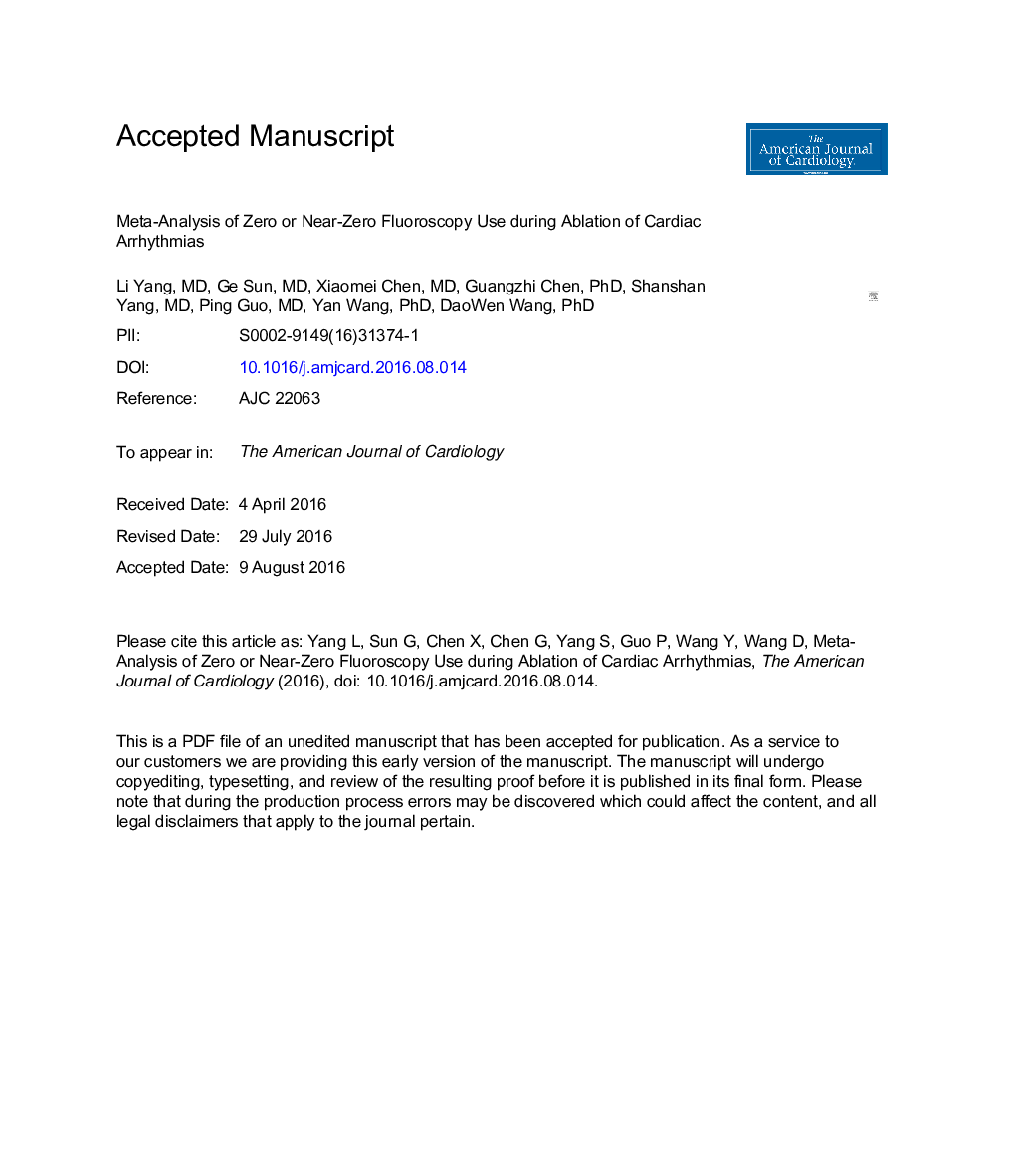| Article ID | Journal | Published Year | Pages | File Type |
|---|---|---|---|---|
| 5595529 | The American Journal of Cardiology | 2016 | 23 Pages |
Abstract
Data regarding the efficacy and safety of zero or near-zero fluoroscopic ablation of cardiac arrhythmias are limited. A literature search was conducted using PubMed and Embase for relevant studies through January 2016. Ten studies involving 2,261 patients were identified. Compared with conventional radiofrequency ablation method, zero or near-zero fluoroscopy ablation significantly showed reduced fluoroscopic time (standard mean difference [SMD] â1.62, 95% CI â2.20 to â1.05; p <0.00001), ablation time (SMD â0.16, 95% CI â0.29 to â0.04; p = 0.01), and radiation dose (SMD â1.94, 95% CI â3.37 to â0.51; p = 0.008). In contrast, procedure duration was not significantly different from that of conventional radiofrequency ablation (SMD â0.03, 95% CI â0.16 to 0.09; p = 0.58). There were no significant differences between both groups in immediate success rate (odds ratio [OR] 0.99, 95% CI 0.49 to 2.01; p = 0.99), long-term success rate (OR 1.13, 95% CI 0.42 to 3.02; p = 0.81), complication rates (OR 0.98, 95% CI 0.49 to 1.96; p = 0.95), and recurrence rates (OR 1.29, 95% CI 0.74 to 2.24; p = 0.37). In conclusion, radiation was significantly reduced in the zero or near-zero fluoroscopy ablation groups without compromising efficacy and safety.
Related Topics
Health Sciences
Medicine and Dentistry
Cardiology and Cardiovascular Medicine
Authors
Li MD, Ge MD, Xiaomei MD, Guangzhi PhD, Shanshan MD, Ping MD, Yan PhD, Dao Wen PhD,
